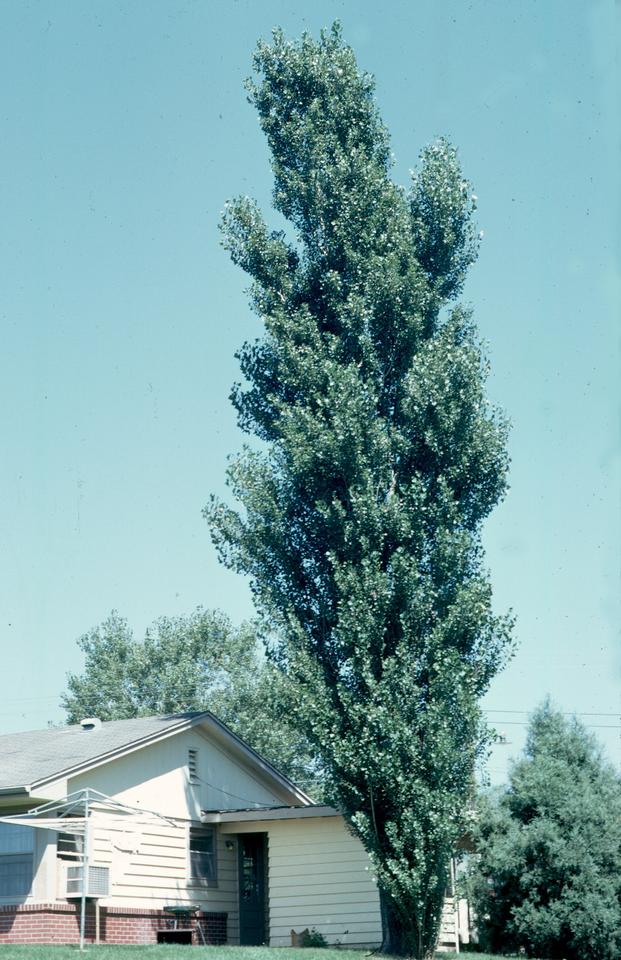Poplar, Lombardy
Populus nigra 'Italica'
Salicaceae - Willow
Description
See also Eastern Cottonwood description and illustrations.
Leaves: Similar to eastern cottonwood.
Twigs/buds: Twigs brown, shiny; thin, and round; tips often hairy. Buds reddish-brown, hairless, shiny; relatively small, appressed, and gummy; lower scales often hairy.
Flowers/fruit: Flowers are male catkins, 1" to 2" in length, with crimson anthers; occur before leaves. Fruitless.
Bark: Grayish-green and smooth when young; darker gray, fissured, and rough with age.
Wood: Weak, prone to breakage; soft, light, and not durable; little information available.
General: Native to western Asia and eastern Europe, but heavily planted in Utah, especially in the past. A sterile clone of Populus nigra. May be insect and/or disease prone, especially when stressed. Prefers abundant water. Rarely should be planted, though limited use in specific situations may be justified.
Landscape Use: Once popular in Utah because of its narrow canopy and upright form. However, stressed trees weaken and die quickly (within 5 to 15 years) due to stem cankers. Twigs break off in wind storms. Fall color occasionally nice in Utah. Grows fast, short-lived. Should be planted less, if at all. Zones 3-9.
Cultivars: 'Afghanica', 'Charkowensis', 'Fastigiata', 'Gigantea', 'Lombardy Gold', 'Majestic', 'Pyramidalis', 'Thevestina'.
Characteristics
General
| Family | Salicaceae - Willow |
|---|---|
| Cultivar Availability | Yes |
| Hardiness Zone | 3-9 |
| Type | Broadleaf |
| Utah Native | No |
Growth
| Growth Rate | High |
|---|---|
| Mature Height | High |
| Longevity | Low |
| Is Good Under Power Lines | No |
| Crown Shapes | Columnar |
Ornamental
| Bark | No |
|---|---|
| Fall Color | Yes |
| Flowers | No |
| Foliage | No |
| Fruit | No |
Tolerance
| Shade | Low |
|---|---|
| Salt | High |
| Drought | Low |
| Poor Drainage | Medium |
| Alkalinity | High |
| Transplanting | High |





